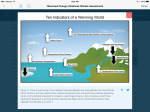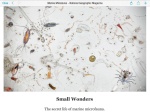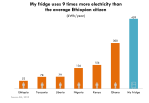*Scroll down for Books, Videos, Websites and Articles related to this Course
BOOKS (Muir and Burroughs)
Works by/about John Muir
–John Muir Exhibit List -with complete text of all books
-some Muir books are also FREE on Kindle
-also see Internet Archive to read his books online
John of the Mountains (Linnie Marsh Wolfe)
Son of the Wilderness (Linnie Marsh Wolfe)
The Pathless Way (Michael Cohen)
John Muir: Apostle of Nature (Thurman Wilkins)
John Muir: Earth-Planet, Universe (free graphic novel from Scottish Book Trust)
Works by/about John Burroughs
–Gutenberg and Amazon–some FREE on Kindle
List of his Major Works (John Burroughs Association)
John Burroughs, Boy and Man (Barrus)
The World of John Burroughs (Kanze)
John Burroughs: An American Naturalist (Renehan)
BOOKS and Other Resources for Related Women Thinkers
Fanny Wright
Fanny Wright: Rebel in America (Celia Morris)
Reason, Religion and Morals (Classics in Women’s Studies)
Memoir of Frances Wright (Amos Gilbert)
Mary Moody Emerson
Journals and Letters
“Almanack” (diary)-image from Harvard
Lecture to the Woman’s Club, Boston, 1869 (Ralph Waldo Emerson)
“A Model of Self-Reliance” (Janice Battiste, Yeshiva Univ., NYC)
Mary Moody Emerson and the Origins of Transcendentalism (Phyllis Cole)
Margaret Fuller
Woman in the Nineteenth Century (free on Kindle)
The Portable Margaret Fuller (ed by Mary Kelley)
Life Without and Life Within (reviews, narratives, essays and poems)
Life Without and Life Within (free on Kindle)
Review of Emerson’s Essays (1844)
Margaret Fuller: A New American Life (Megan Marshall)
The Lives of Margaret Fuller (John Matteson)
Jeanne C. Carr
The Life and Letters of John Muir
Kindred and Related Spirits (Bonnie Gisel)
Clara Barrus
The Heart of Burroughs’ Journals
The Life and Letters of John Burroughs
Women Naturalists/Naturalistic Writers (let’s grow this list)
Carol Ruckdeschel (Will Harlan, Untamed: The Wildest Woman in America)
Lorraine Anderson, At Home on This Earth; Sisters of the Earth
Marcia Bonta, Women in the Field: America’s Pioneering Women Naturalists
Barbara Gates, In Nature’s Name: An Anthology of Women’s Writing
Heid Erdrich, Sister Nations: Native American Women Writers
Linda Taylor, Great Women Exploring Nature
Barbara Cook, Women Writing Nature
Anna Comstock, Handbook of Nature Study
Diane Ackerman
Jane Goodall
Gretel Erhlich
Kathleen Dean Moore
Annie Dillard
Linda Hogan, Dwellings
Janine Benyus, Biomimicry
Rachel Carson, Silent Spring
Charlotte Walker, Sharp Eyes
Susan Jacoby, Freethinkers; The Age of Unreason
VIDEOS
“A Day with John Burroughs” (1919)
Burroughs camping with Edison, Ford, et. al. (1914)
Bee Removal at Woodchuck Lodge
“John Muir: A Glorious Journey” (NPS with Lee Stetson as Muir)
“John Muir in the New World” (PBS)
“Essential Wildness” (John Muir Trust, Scotland)
Our National Parks (PBS Preview, esp. opening comments)
Walden Pond (to get a feel for Henry’s “chapel”)
The Known Universe (American Museum of Natural History)
Dancing Peacock Spider (for the pure delight)
Owl and Cat (Muir’s “animal kin”)
David Suzuki on World Population
Biomimicry (Biologist Janine Benyus, TED talk)
What Happens to the Body after You Die? (Scientific American)
Hidden “Miracles” of the Natural World (TED Talk)
Bioluminescence (TED Talk)
The Best of Human Nature (Upworthy)
Best David Attenborough Moments (BBC)
Naturalism and the Meaning of Life (Sean Carroll, Cal Tech)
Pack of Howling Coyotes (YouTube)
Laniakea (the Amazing Art of the Galaxies)
The Pale Blue Dot (Carl Sagan. If you’ve seen it before, watch it again)
Hawk Attacks Drone (and Good for the Hawk!)
The Pride (of Lions) and Young Hercules (the Elephant)
WEBSITES
John Burroughs Association (American Museum of Natural History, NY)
John Burroughs (historical book reviews, death announcement, NYT Archives)
Julian Burroughs Papers (New York State Archives)
Burroughs and Whitman (with insights into Ursula North Burroughs)
John Muir Exhibit (Sierra Club)
John Muir Center (University of the Pacific)
John Muir Association (Martinez, CA)
John Muir Birthplace (Dunbar, Scotland)
John Muir Way (134 mile trail in Scotland)
John Muir National Historic Site (NPS, home in Martinez, CA)
John Muir Trust (Scotland)
National Parks (full list with memorials, monuments, etc)
Harriman Alaska Expedition of 1899 (U of W photos)
Ralph Waldo Emerson (info and works)
Margaret Fuller (American Transcendentalism)
Frances Wright (Early American Freethinking Feminist)
Thomas Paine (Secular Web)
Sacred Secular Sanctuary (Canada)
Dust Tracks on the Web (photography)
The Earth Looks Like a Living Creature (NASA)
Frederick Law Olmstead (PBS)
Religious Naturalist Association (interesting new organization)
America’s Largest National Park (NPS)
At 13.2 million acres which is bigger than the country of Switzerland, Wrangell-St. Elias stretches from one of the tallest peaks in North America, Mount St. Elias (18,008) to the ocean. Yet within this wild landscape, people have been living off the land for centuries and still do today.
Virunga National Park (Democratic Republic of the Congo)
RELATED ARTICLES
A Monk who Ordains Trees (BBC)
Hidden Secrets of Nature in Pictures (Guardian)
National Wildlife Refuges–112th Anniversary. . .Thanks to Teddy!
If you love nature and wildlife, join us on March 14 in celebrating the 112th birthday of the National Wildlife Refuge System, the world’s premier network of public lands dedicated to wildlife conservation.
Many of America’s birds, mammals, reptiles and fish depend for survival on the 562 national wildlife refuges and 38 wetland management districts in the Refuge System. Managed by the U.S. Fish and Wildlife Service, refuge lands provide vital habitat for thousands of species. President Teddy Roosevelt created the first national wildlife refuge on March 14, 1903, at Pelican Island, Florida, to protect brown pelicans from market hunters looking to profit from their slaughter.
Today, the Refuge System includes more than 560 national wildlife refuges and 38 wetland management districts covering over 150 million acres plus more than 418 million acres of marine national monuments. There’s at least one national wildlife refuge in every state and one within an hour’s drive of most major metropolitan areas.
The Death of Iran’s “Dead Sea” (CNN)
Man on Cellphone Misses a Close Encounter
The Glaciers are Talking (NPR)–Muir would be listening
Protecting the Arctic (ANWR)
Sisi Goes to Addis Ababa (NYT)–Nine countries manage one river, the Nile
Yosemite Climbers Didn’t “Conquer” Anything (CNN)
Ants Handle Traffic Better Than We Do (NPR)
Following John Muir (BBC)
“A veritable jungle of organisms is helping keep each of us alive.”
Largest Hog in the history of North Carolina (so, KILL it!)–at least it fed the hunter’s family
First Mountain Lion seen in Kentucky in 150 Years! (so, KILL it!)
First Gray Wolf in Grand Canyon for 70 Years! (so, KILL it!)
Eat the Enemy? Should we eat invasive species?
“Preferring a search for objective reality over revelation is another way of satisfying religious hunger.” (E.O. Wilson)
“There is no reason to expect that we humans can get to the ultimate nature of reality; we must learn to live with the mystery, with the fact that we cannot know all there is to know. . . .
It’s the incompleteness of knowledge that makes us matter.” (Marcelo Gleiser)
Zootopia (Denmark)
People commonly think of the capture and exhibiting of wild animals as a source of educational entertainment. But there is, too, behind the kidnapping and keeping, a subliminal urge to stay close to representatives of a wilderness of which we were once part.
At this stage in the history of human ark-building, however, the ongoing elimination of the wild and its inhabitants is eerily mirrored in the continued removal of their captive counterparts to our panoramic, lifelike renditions of their vanishing homes.
Oil Drilling threat to Virunga National Park (amazing sanctuary in DRCongo)
The Brave Rangers Protecting Virunga
Muir Obituary (LA Times)
John Muir’s Legacy Questioned (LA Times. . .thought provoking)
My LA Times comment:
Of course we have to build on Muir’s legacy and of course he was to some extent stuck in his time. Yet, as I teach a course on Muir (alongside Burroughs, Thoreau and others) I still find him more “progressive” from 100 years on than many “progressives” today. Especially in his–yes, somewhat idealistic, but ultimately realistic–philosophy of preservation and his re-definitions of worn-out theological constructs (“Beauty is God”). What I find interesting in this article is that it is assumed environmentalism has “moved beyond” Muir. In my view, we are still stumbling up the trails to catch up to him!
Pagan Statement on the Environment (Covenant of the Goddess)
Blasphemy and Desecration (Holy Names, Books and Addresses). . .Allah in Malaysia. . .Jesus in PA
New Anthology of World Religions
Secularism has become a hot topic in academia, as scholars debate whether secularization is defined by a defeat of faith, or by a multiplication of new religious and spiritual options.
Nature’s Sparkles (BBC) and Color in Nature (NPR)
“This is why we find science exciting,” he said.
“[We can] look at nature to find things we haven’t even thought of.”
Deep Ecology and Nature Religion (Patheos)
I.S. as “Invasive Species” (interesting politics/nature connection by Thomas Friedman)
Just how did ISIS spread so far, so fast? The National Arboretum might have the answer.
Millenials are not “Environmentalist”
The isthmus has more bird, mammal and reptile species than the United States and Canada combined.
Reverence for a Dangerous Mountain (Mount Ontake eruption)
Soil Doctors in Central Park (170,000 different microbes)
“The Vagabonds”–Burroughs camping with Ford and Others (Adirondack Life)
President Preserves Pacific Remote Islands Marine National Monument (Antiquities Act -1906)
“Thoreau’s Flute” (poem by Louisa May Alcott)
Haunting the hills, the stream, the wild,
Swallow and aster, lake and pine,
To him grew human or divine,–
Fit mates for this large-hearted child.
Such homage Nature ne’er forgets,
And yearly on the coverlid
‘Neath which her darling lieth hid
Will write his name in violets.
“Guardians of the Rainforest” Assassinated in Peru (The Guardian)
Nature Deficit Disorder (New Nature Movement)
Story of TR and the Teddy Bear (Treatment of Animals-NPR/TED Talk)
Two Spirits in the Venezuelan Jungle (fascinating)
San Joaquin River (CNN)
“Disagreement is not a bad thing. But learning history means engaging with aspects of the past that are troubling, as well as those that are heroic.
Fewer and fewer college professors are teaching the United States history our grandparents learned — memorizing a litany of names, dates and facts — and this upsets some people. “College-level work” now requires attention to context, and change over time; includes greater use of primary sources; and reassesses traditional narratives. This is work that requires and builds empathy, an essential aspect of historical thinking.”
Saving Our Birds (Cornell Ornithology)
Between Godliness and Godlessness (Bruni)
New West Renaissance (Timothy Egan)
A wounded piece of land can be made whole, if managed for the future by people whose capacity for wonder is limitless
50 Years of Wilderness (Slate)
Climbing to Ethiopia’s Mountain Churches (don’t look down!)
Weighing the Cost of Hunting: Killing a Big Shark, 1000 pound Alligator in Alabama, 800 pound Squid; 780 pound Bear. . .and there go the Sea Snakes! (the cure for their bite? why, rhino horn of course!)
Go Take a Hike (NYT)
The Wild or Disneyland? (The Arches)
“Giant Flea Hunt”! (esp. the last two paragraphs)
“Wildlife Services” (USDA) killing over 4 Million Wild Animals a Year?
Endangered Animals in California (SF Chron)
China Needs a John Muir (bulldozing 700 mountains?!, BBC)
Golden Gate National Rec General Plan (Vol. 1, opening words)
GOLDEN GATE NATIONAL RECREATION AREA MUIR WOODS NATIONAL MONUMENT Final General Management Plan/Environmental Impact Statement Volume 1 2014
The new plan for Golden Gate National Recreation Area and Muir Woods reflects the intent of Congress in establishing the parks, as well as the vast amount of knowledge about the parks’ exceptional natural and cultural resources that has been gained since 1980. The plan offers a vision of the park that accommodates its changing cultural and social landscape. It was developed in the context of the evolution in attitudes toward conservation and preservation that has occurred over the past three decades
With Enough Money can you Own the Beach and Tide? (SF Chron)
Letter from Roosevelt to Burroughs on WWI (Slate)
Forest Church (UK; Wales; Arizona)
Green Blobs in the Andes (older than Sequoias?!)
Ganges River. . .Dirty Goddess (NYT)
Forgotten History of Climate Science (NPR)–my comment below
Over 100 years ago, one of the greatest naturalists of the 19th Century, John Burroughs, wrote presciently: “Our civilization is terribly expensive to all its natural resources; one hundred years of modern life doubtless exhausts its stores. . . . Its coal and oil will be about used up, all its mineral wealth greatly depleted, the fertility of the soil will have been washed into the sea. . .its wild game will be nearly extinct, its primitive forests gone, and soon how nearly bankrupt the planet will be!” (Leaf and Tendril, 1908). Burroughs was a positive, hopeful, secular thinker who stirred Teddy Roosevelt to preserve 300 million acres of land. Yet his warning should be taken to heart and mind.
“Granny” Orca (103 years old; Russian River to Canada)
National Climate Assessment (consider Muir’s beloved glaciers and the precious resource of WATER)
Climate Disruption (NYT): “The report is exhaustive and totally alarming.”
Life in a cup of seawater (Nat. geo):
One Universe, One Life (NPR)
Putting all this together, we realize that we are indeed connected to the rest of the cosmos chemically and that we share the same basis for life as any other hypothetical living thing out there. At the same time, we are unique, as are all other living creatures on this planet. Life is this amazing force that, from a carbon-based code and a common genetic ancestor, can create a staggering diversity of wonders in this, and possibly other, worlds.
“some trillion trillion worlds in our universe, give or take a factor of 100. (A geeky comment: funny that this is so close to Avogadro’s number, the number of atoms in one gram of hydrogen.)”
Priest Shot in Homs, Syria (note his thoughts on religion, nature and work)
He also taught meditation and yoga in a quiet, light-filled space, neither church nor mosque, that he built at the heart of al-Ard. “For me,” he said, “it is important to start from the human meeting. Not to start with religion.”
“The hike brings people together. They share the common experience of fatigue, of sleeping and eating together, and this builds a link between people. After the hike it is not important that you are Christian or Muslim, it is important that you are present.”
Nevada Cattle Rancher vs. the Government (Where would Muir, or Roosevelt, stand on this? Compare the Drake’s Oyster debate)
Consciousness as a “state of matter” (PBS)
Earth Day (Photos and Quotes from Various Religions)
47% of American Land is Unoccupied! (map)
One Fifth of China’s Soil is Contaminated (BBC)
“10 Most Sacred Spots on Earth” (FOX. Note that two happen to be in one country)
Graphene (an amazing material only discovered 10 years ago!)
Nature Fakers? (Snail makes an umbrella?)
Baby Baboon and Lions (Nat. Geo photos)
Poachers Attacking Redwoods! (NYT)
A Non-Believer tries to make sense of visions (Barbara Ehrenreich, Wild God, NPR)
I was just staring at the woods … [when] something happened. It’s like a layer peeled off the world, the layer that contains all the meanings, the words, the language, the associations we have. Yeah, I was looking at trees, but I no longer could say I knew exactly what a tree was, with all the knowledge and experience that goes into our notion of a tree.
The Hunt for Dark Matter (BBC)
Scientists believe all of the matter we can see – planets, stars, dust and so on – only makes up a tiny fraction of what is actually out there.
They say about 85% of the matter in the Universe is actually dark matter, so called because it cannot be seen directly and nobody really knows what it is.
Clean, Green INDOOR Fish Farming? (NPR)
Skating Church in SF (note use of term “sacred”)
The Archdiocese of San Francisco does not object to the building’s current use. After all, it ceased being a church at its final Mass on Dec. 26, 2004, when church officiants formally closed it. Now, it’s just a regular building, said archdiocese spokeswoman Christine Mudridge.
A building is only a church when it is formally blessed and sanctified for religious ceremonies, she said.
“In the liturgical ceremony of the Mass of the Eucharist, we absolutely believe without a doubt that the church holds the real presence of Christ’s body, blood, soul and divinity,” she said. “When it’s no longer considered sanctified, it’s just a building in the shape of a church.”
Cats and Birds (are cats evil?)
Art of Audubon (Burroughs wrote a book on Audubon, 1902)
The Ethics of Protecting Wild Horses
WWJD? (What Would John Do?): Ranchers and Conservation
DAM-Nations (dams on the Brahmaputra; dams on the Nile)–how we “tame” the wild
‘Rivers unite us, but dams divide us,” says Peter Bosshard, of the International Rivers Network.Drought, Rice Farmer and MIgrating Birds (NPR)
“In May last year, the builders achieved their first milestone when they diverted the course of the Blue Nile.”
Inflation of the Universe (BBC)
The aim has been to try to find a residual marker for “inflation” – the idea that the cosmos experienced an exponential growth spurt in its first trillionth, of a trillionth of a trillionth of a second.
Theory holds that this would have taken the infant Universe from something unimaginably small to something about the size of a marble. Space has continued to expand for the nearly 14 billion years since.
Why the Sky is Blue (Phil Plait, Slate)
The Golden Age of Freethought (Susan Jacoby)
Oldest Roman Temple Found (to Goddess Fortuna); note location and think about this:
And as the city grew layer by layer and more temples were built, Ammerman, the archaeologist says, the Romans encroached on their river, diverting the original waterway.
“It’s actually not totally natural, it’s the humans are actually changing the river to the way it is here,” he says. “They had the ability to realize that to make their city go, they have to transform the landscape.”
Mapping the Wilderness of the Human Brain (National Geo)
Is the Wolf a Real American Hero? (NYT. Note the last paragraph)
Wolves in France? (BBC)
Elizabeth Kolbert. The Sixth Extinction (Guardian)
The Real Dr. Doolittle (Times of India)
Philosophy Rules the World (NPR)
We don’t see it, because we see with it. Philosophy provides the goggles with which we make sense of reality.
Pee Power (the Humble Future of Humanity?–BBC)
Last year, a group of researchers at Bristol Robotics Laboratory in the UK proved they could power a mobile phone with human urine. Their device uses what’s known as microbial fuel cells, or MFCs, to generate enough energy for a smartphone to text, browse the internet and make short phone calls. But they believe, in time, it could eventually help power houses, buildings, and maybe even entire off-grid villages. . .So even if answering nature’s call can actually help us make calls for the first time in history, don’t expect your next toilet to come with built-in phone chargers – at least, not just yet.
Croagh Patrick is just one of several places where St Patrick is famously claimed to have banished snakes from Ireland, chasing them into the sea during his mountaintop fast. Another is the Serpent’s Lake, in the Gap of Dunloe. Located just outside of Killarney National Park in County Kerry, the lake is where Patrick is alleged to have tricked and imprisoned the last of Ireland’s snakes in a chest – then thrown the them into the waters. The Gap — a glorious mountain pass with crystal-clear streams, rugged peaks and wildflowers — is best explored by walking, cycling, or, most atmospherically, jaunting car (horse and cart) with entertaining commentary from a jarvey (driver). At the northern end, the landmark 19th-century pub Kate Kearney’s Cottage, still owned by Kate Kearney’s descendants, is a great resource for information on the area. (Of course, it is now widely accepted that there never were any snakes in Ireland in the first place, and that the legends surrounding Patrick’s exploits are symbolic of eliminating pagan culture.)
Patrick spent some 30 years spreading the Gospel and founding churches and monasteries, eventually becoming the first bishop of Armagh, Primate of All Ireland toward the end of his life. He retired to what is now County Down, where it is believed he died in 461 AD on 17 March — hence his feast day — in Downpatrick. He is said to be buried in the grounds of the 12th-century Down Cathedral.




